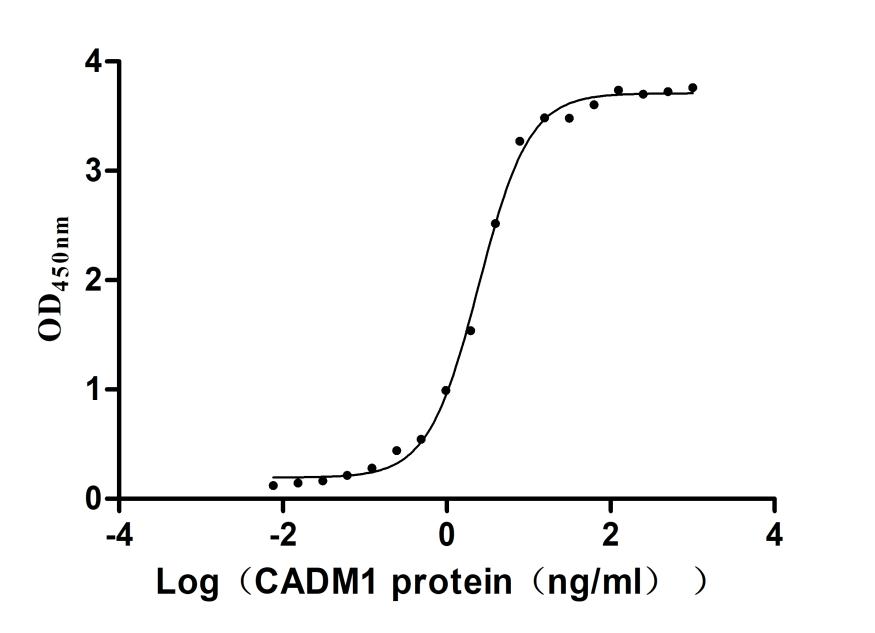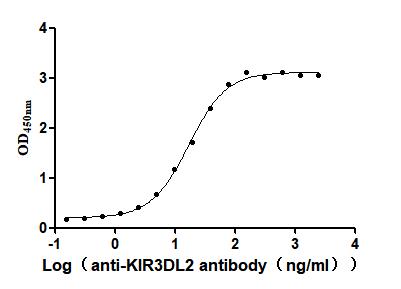Recombinant Saccharomyces cerevisiae ATP-dependent helicase NAM7 (NAM7), partial
-
中文名稱:釀酒酵母NAM7重組蛋白
-
貨號:CSB-EP330024SVG-B
-
說明書:
-
規格:
-
來源:E.coli
-
共軛:Avi-tag Biotinylated
E. coli biotin ligase (BirA) is highly specific in covalently attaching biotin to the 15 amino acid AviTag peptide. This recombinant protein was biotinylated in vivo by AviTag-BirA technology, which method is BriA catalyzes amide linkage between the biotin and the specific lysine of the AviTag.
-
其他:
產品詳情
-
純度:>85% (SDS-PAGE)
-
基因名:NAM7
-
Uniprot No.:
-
別名:NAM7; IFS2; MOF4; UPF1; YMR080C; YM9582.05C; ATP-dependent helicase NAM7; EC 3.6.4.-; Nonsense-mediated mRNA decay protein 1; Nuclear accommodation of mitochondria 7 protein; Up-frameshift suppressor 1
-
種屬:Saccharomyces cerevisiae (strain ATCC 204508 / S288c) (Baker's yeast)
-
蛋白長度:Partial
-
蛋白標簽:Tag?type?will?be?determined?during?the?manufacturing?process.
The tag type will be determined during production process. If you have specified tag type, please tell us and we will develop the specified tag preferentially. -
產品提供形式:Lyophilized powder Warning: in_array() expects parameter 2 to be array, null given in /www/web/cusabio_cn/public_html/caches/caches_template/default/content/show_product_protein.php on line 662
Note: We will preferentially ship the format that we have in stock, however, if you have any special requirement for the format, please remark your requirement when placing the order, we will prepare according to your demand. -
復溶:We recommend that this vial be briefly centrifuged prior to opening to bring the contents to the bottom. Please reconstitute protein in deionized sterile water to a concentration of 0.1-1.0 mg/mL.We recommend to add 5-50% of glycerol (final concentration) and aliquot for long-term storage at -20℃/-80℃. Our default final concentration of glycerol is 50%. Customers could use it as reference.
-
儲存條件:Store at -20°C/-80°C upon receipt, aliquoting is necessary for mutiple use. Avoid repeated freeze-thaw cycles.
-
保質期:The shelf life is related to many factors, storage state, buffer ingredients, storage temperature and the stability of the protein itself.
Generally, the shelf life of liquid form is 6 months at -20°C/-80°C. The shelf life of lyophilized form is 12 months at -20°C/-80°C. -
貨期:Delivery time may differ from different purchasing way or location, please kindly consult your local distributors for specific delivery time.Note: All of our proteins are default shipped with normal blue ice packs, if you request to ship with dry ice, please communicate with us in advance and extra fees will be charged.
-
注意事項:Repeated freezing and thawing is not recommended. Store working aliquots at 4°C for up to one week.
-
Datasheet :Please contact us to get it.
靶點詳情
-
功能:Probable helicase involved in mitochondrial functions. Required for rapid turnover of mRNAs containing a premature translational termination codon.
-
基因功能參考文獻:
- The propose that the Sse1/Hsp70 complex maintains the solubility of FLAG-Pgk1-300, thereby stimulating its Upf-dependent degradation by the proteasomes. PMID: 28483531
- The study provides evidence that two tyrosines within a phospho-motif of Upf1 act redundantly to promote ATP hydrolysis, Nonsense-Mediated mRNA Decay efficiency and translation termination fidelity. PMID: 24198248
- The cysteine- and histidine-rich (CH) domain and the RNA helicase domain of yeast Upf1 can engage in two new types of molecular interactions: an intramolecular interaction between these two domains and self-association of each of these domains. PMID: 24100012
- The upf1Delta mutant contained elevated copper levels in the vacuole relative to wild-type yeast cells, after both strains were exposed to elevated copper levels. Copper tolerance by the upf1Delta mutant is dependent on the presence of CTR2. PMID: 23450501
- Results indicate that Upf1 plays a key role in a mechanism coupling termination and ribosome release at a premature termination codon to subsequent ribosome reutilization for another round of translation initiation. PMID: 20675403
- Upf1 stimulates degradation of the product derived from aberrant messenger RNA containing a specific nonsense mutation by the proteasome PMID: 19798102
- interaction between Upf1p and the nuclear pore proteins, Nup100p and Nup116p, is significant because it suggests a mechanism to ensure that Upf1p associates with newly synthesized mRNA as it is transported from the nucleus to the cytoplasm PMID: 15716093
- Upf1p associates with direct substrates of the NMD pathway PMID: 18087042
顯示更多
收起更多
-
亞細胞定位:Cytoplasm. Nucleus. Note=Present predominantly in the cytoplasm, but is also found in small quantities in the nucleus.
-
蛋白家族:DNA2/NAM7 helicase family
-
數據庫鏈接:
KEGG: sce:YMR080C
STRING: 4932.YMR080C
Most popular with customers
-
Recombinant Human CD226 antigen (CD226), partial (Active)
Express system: Mammalian cell
Species: Homo sapiens (Human)
-
Recombinant Human Lymphotoxin-alpha (LTA) (Active)
Express system: Mammalian cell
Species: Homo sapiens (Human)
-
Recombinant Human Tumor necrosis factor receptor superfamily member 1A (TNFRSF1A), partial (Active)
Express system: Mammalian cell
Species: Homo sapiens (Human)
-
Recombinant Human E3 ubiquitin-protein ligase ZNRF3 (ZNRF3), partial (Active)
Express system: Mammalian cell
Species: Homo sapiens (Human)
-
Recombinant Human Signal transducer CD24 (CD24)-Nanoparticle (Active)
Express system: Mammalian cell
Species: Homo sapiens (Human)
-
Recombinant Human Interleukin-17A (IL17A) (T26A) (Active)
Express system: Baculovirus
Species: Homo sapiens (Human)
-
Recombinant Human Cytotoxic and regulatory T-cell molecule (CRTAM), partial (Active)
Express system: Mammalian cell
Species: Homo sapiens (Human)
-
Recombinant Human Killer cell immunoglobulin-like receptor 3DL2 (KIR3DL2), partial (Active)
Express system: Mammalian cell
Species: Homo sapiens (Human)


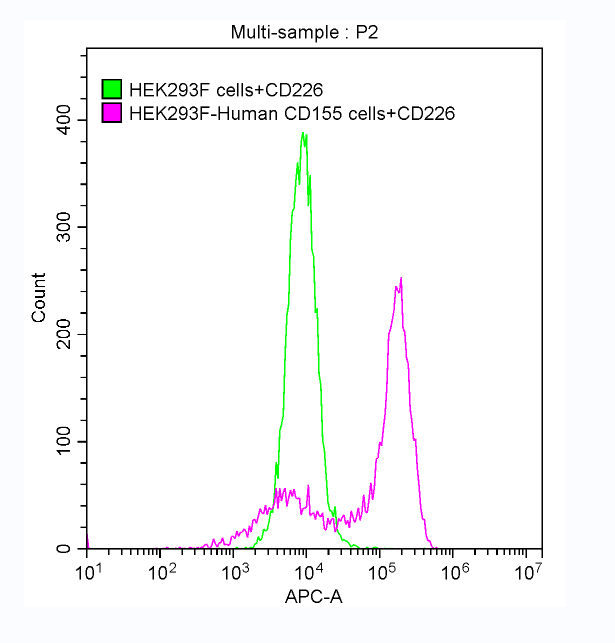
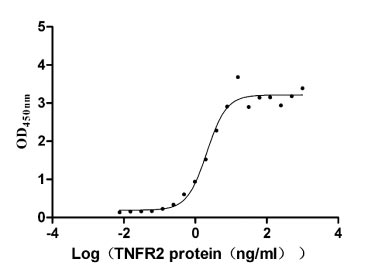
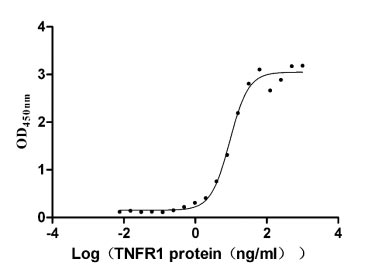
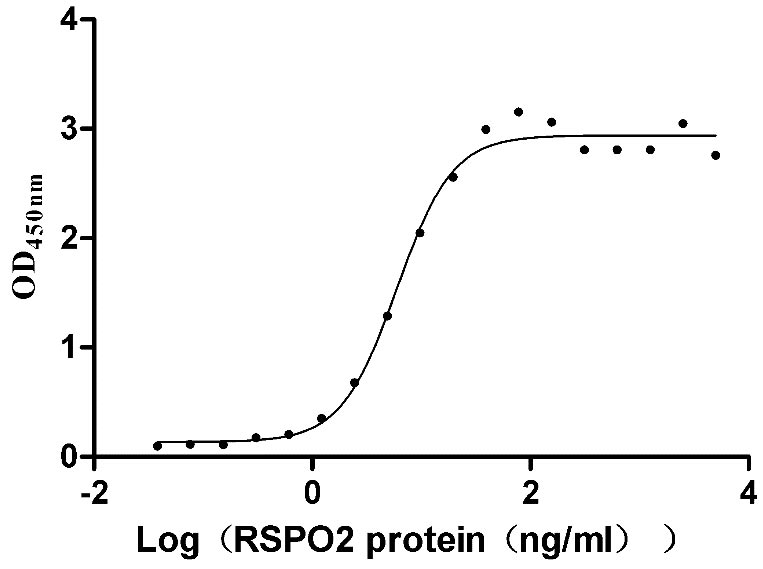
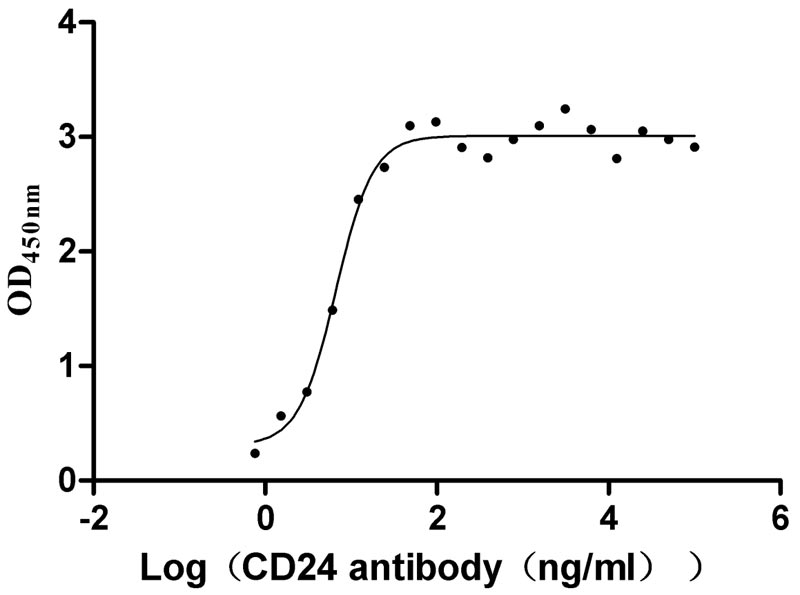
-AC1.jpg)
